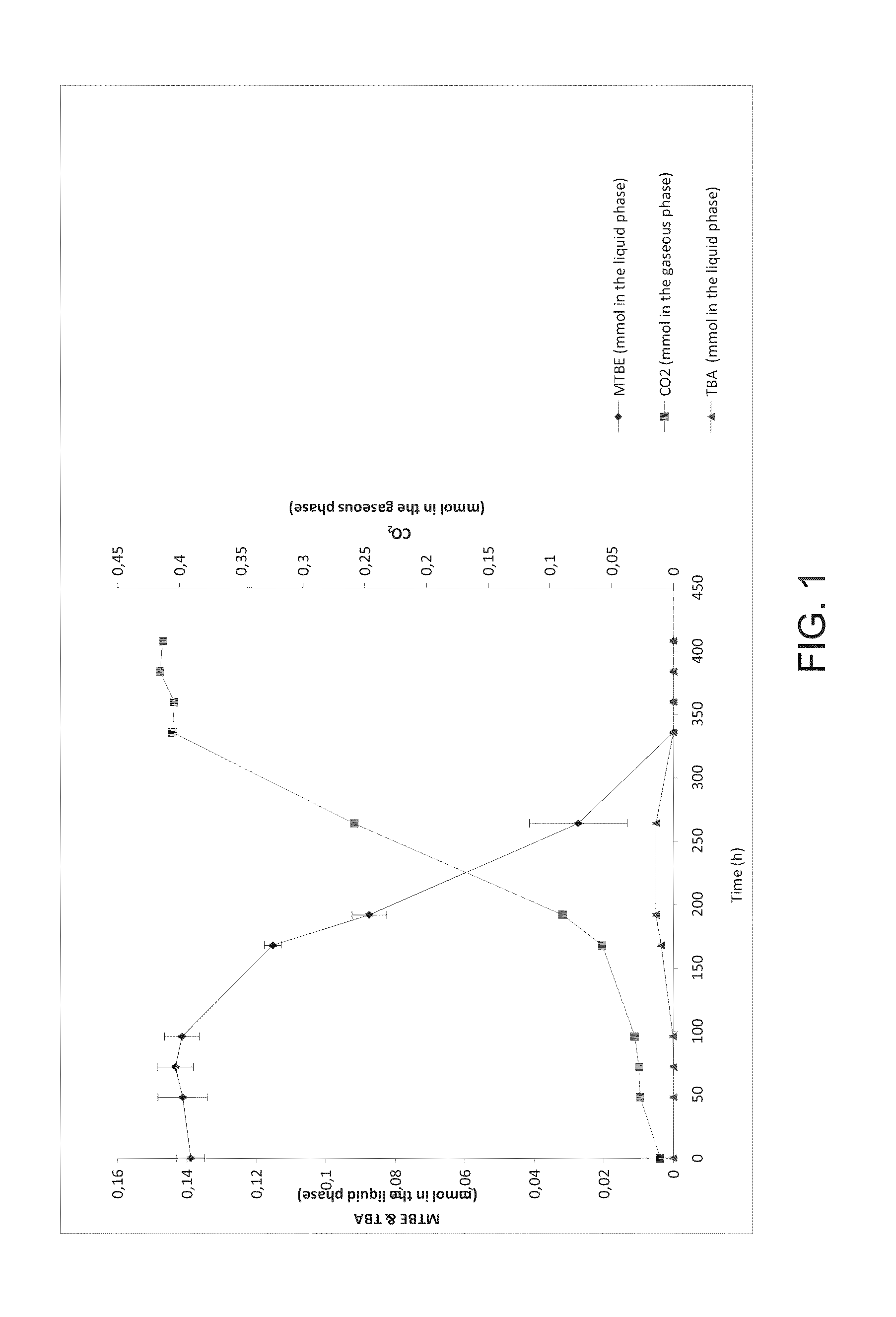Bacteria of the genus pseudoxanthomonas that are capable of degrading methyl tert-butyl ether (MTBE) into a solution in effluent
a technology of methyl tert-butyl ether and bacteria, which is applied in the direction of biochemistry apparatus and processes, water contaminants, water/sludge/sewage treatment, etc., can solve the problems of chronic pollution, numerous accident risks, and transportation of hydrocarbons by land or water
- Summary
- Abstract
- Description
- Claims
- Application Information
AI Technical Summary
Benefits of technology
Problems solved by technology
Method used
Image
Examples
examples
Growth of the Bacterium of the Genus Pseudoxanthomonas CNCM 1-4657 On A Mineral Medium In the Presence of MTBE As A Single Carbon Source
[0015]A preculture of the bacterium of the genus Pseudoxanthomonas CNCM 1-4657 is made: the strain Pseudoxanthomonas CNCM 1-4657 is inoculated on a saline mineral medium MM supplemented with MTBE at approximately 200 mg.1J1 as a source of carbon and energy.
[0016]The medium MM has the following composition:
KH2PO41.4gK2HPO41.7gNaNO31.5gMgSO4, 7H2O0.5gCaCl2, 2H2O0.04gFeCl3, 6H2O0.012gConcentrated Solution of Vitamins1mLConcentrated Solution of1mLOligoelementsH2O1L
[0017]The concentrated solution of vitamins has the following composition for 1 liter of distilled water:
Biotin200 mg Riboflavin50 mgNicotinic Acid50 mgPantothenate50 mgp-Aminobenzoic Acid50 mgFolic Acid20 mgThiamine15 mgCyanocobalamin1.5 mg
[0018]The concentrated solution of oligoelements has the following composition for 1 liter of distilled water:
CuSO4, 5H2O0.1 g MnSO4, 2H2O1 gZnSO4, 7H2O1...
PUM
| Property | Measurement | Unit |
|---|---|---|
| concentrations | aaaaa | aaaaa |
| concentration | aaaaa | aaaaa |
| octane number | aaaaa | aaaaa |
Abstract
Description
Claims
Application Information
 Login to View More
Login to View More - R&D
- Intellectual Property
- Life Sciences
- Materials
- Tech Scout
- Unparalleled Data Quality
- Higher Quality Content
- 60% Fewer Hallucinations
Browse by: Latest US Patents, China's latest patents, Technical Efficacy Thesaurus, Application Domain, Technology Topic, Popular Technical Reports.
© 2025 PatSnap. All rights reserved.Legal|Privacy policy|Modern Slavery Act Transparency Statement|Sitemap|About US| Contact US: help@patsnap.com

